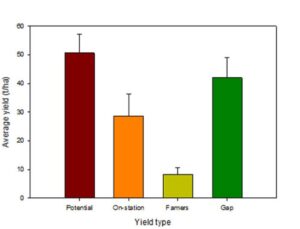When it comes to purchasing a vehicle, the decision to buy a new or used car is a significant one that affects your finances and lifestyle. The choice involves various factors such as cost, depreciation, features, safety, technology, insurance, and maintenance. This article provides insights to help you navigate the complexities of both options, ensuring you make an informed decision that aligns with your personal needs, preferences, and financial situation.
Key Takeaways
- New cars offer the latest features and technology but come with higher initial costs and steeper depreciation rates.
- Used cars can provide significant savings on purchase price and insurance, but may involve higher maintenance costs over time.
- Understanding the total cost of ownership, including financing options and long-term expenses, is crucial for making a cost-effective decision.
- Safety features and warranty coverage are important considerations; new cars may have more advanced safety options and better warranty terms.
- Personal needs, market availability, and a thorough comparison of the long-term financial implications will guide you to the best choice between new and used cars.
Understanding the Financial Implications

Comparing Monthly Costs
When considering the purchase of a vehicle, monthly payments are a significant factor for many buyers. The average monthly payment for a used vehicle is $532, while a new vehicle averages $738, according to Experian. This difference can have a substantial impact on a buyer’s budget over time.
Monthly costs are not just about the payment itself; they encompass a range of expenses associated with vehicle ownership. Here’s a quick comparison based on data from the fourth quarter of 2023:
| Expense Type | New Car Average | Used Car Average |
|---|---|---|
| Monthly Payment | $738 | $532 |
| First Year Maintenance | $140 | $1,371 |
Remember, while the initial monthly payment for a used car may be lower, maintenance costs can offset these savings, especially in the first year of ownership.
It’s essential to look beyond the monthly payment and consider all associated costs, including insurance, registration fees, fuel, and maintenance. Budgeting for the total cost of ownership will provide a more accurate picture of the financial implications of your decision.
Long-Term Ownership Expenses
When considering the purchase of a vehicle, it’s crucial to look beyond the sticker price. Long-term ownership expenses can significantly impact your finances over the duration of your car ownership. For new cars, the initial cost is just the beginning. You’ll also need to account for the steep depreciation that occurs within the first few years. A new car can lose up to 20% of its value in the first year alone, and this depreciation continues for the first decade.
On the other hand, used cars may come with lower upfront costs, but they often carry higher maintenance and repair expenses over time. It’s important to budget for these increased maintenance costs, as they can diminish the savings from the initial purchase price. Here’s a quick comparison of estimated expenses for new and used cars:
| Expense Type | New Car | Used Car |
|---|---|---|
| Estimated Monthly Payment | $668 | $449 |
| First Year Maintenance Costs | $140 | $1,371 |
Remember, the true cost of a vehicle extends beyond its purchase price. Factor in all ownership expenses to make an informed decision.
Ultimately, whether you opt for a new or used car, it’s essential to consider both the short-term and long-term financial implications. Doing so will help you understand the total cost of ownership and ensure that your vehicle choice aligns with your budget and lifestyle needs.
Financing Options and Interest Rates
When considering financing options for your vehicle purchase, it’s crucial to understand how interest rates can affect your monthly payments and the total cost of the loan. New cars often come with attractive financing incentives, such as lower interest rates and special offers from manufacturers, which can lead to more affordable monthly payments.
However, used cars might not have the same incentives, and interest rates can vary widely based on your credit score. Here’s a quick overview of average car loan interest rates by credit score:
| Credit Score Range | Average Interest Rate |
|---|---|
| Superprime: 781-850 | 5.64% |
| Prime: 661-780 | 7.01% |
| Nonprime: 601-660 | 9.60% |
| Subprime: … | …% |
It’s essential to secure the best possible financing terms to ensure that you’re not overpaying in the long run. Whether you opt for a new or used car, leveraging current auto rates and incentives can make a significant difference in your overall financial commitment.
Remember, the right financing option should align with your budget and lifestyle. Take the time to compare offers and negotiate the terms to find the best deal for your situation.
Evaluating Depreciation and Value

New Car Depreciation Rates
When considering the purchase of a new vehicle, it’s crucial to understand that depreciation is the single largest expense in car ownership. A new car can lose about 20% of its value in the first year alone, with the steepest decline occurring the moment you drive off the dealership lot. Over the first few years, this depreciation can lead to negative equity, where the car’s value is less than the amount owed on it.
Depreciation Rates for New Cars:
- Year 1: 20% loss in value
- Year 2-6: Additional 10% annually
- Year 7+: Slower depreciation rate
The digital revolution has made it easier for consumers to access information that can help in making informed decisions about car investments. Understanding these depreciation rates is essential for assessing the long-term financial impact of purchasing a new vehicle. While luxury cars may offer prestige, they are often the worst performers in terms of holding their value over time.
Used Car Value Retention
When considering a used car purchase, one of the most compelling arguments is the slower depreciation rate compared to new vehicles. Used cars tend to retain more of their value over time, making them a potentially wiser financial investment in the long run. After the initial depreciation hit that new cars suffer, a used car’s value decreases at a more gradual pace.
For example, while a new car can lose about 20% of its value within the first year, a three-year-old used car might only see a depreciation of roughly 10%. This reduced rate of depreciation can be particularly advantageous for buyers looking to sell or trade-in their vehicle in the future.
| Age of Car | Depreciation Rate |
|---|---|
| 1 year | ~20% |
| 3 years | ~10% |
In addition to the financial benefits, the used car market offers a wide variety of choices, allowing buyers to find a vehicle that aligns with their specific preferences and needs. However, it’s important to consider factors such as market conditions and economic outlook when making a decision, as they can influence the overall value retention of a used car.
While new cars offer the latest features and technology, the financial implications of depreciation can make used cars a more attractive option for budget-conscious buyers.
Calculating Total Cost of Ownership
When considering the purchase of a vehicle, the Total Cost of Ownership (TCO) is a crucial factor that goes beyond the sticker price. TCO includes various expenses that accumulate over the life of the vehicle, such as fuel, maintenance, insurance, and depreciation. To make an informed decision, it’s essential to calculate these costs for both new and used cars.
According to AAA, the average car owner will pay $762 in 2023 for licensing, registration, and taxes.
Here’s a simplified breakdown to help you estimate the TCO for a vehicle:
- Initial Purchase Price
- Financing Costs (if applicable)
- Fuel Expenses
- Regular Maintenance and Unexpected Repairs
- Insurance Premiums
- Licensing, Registration, and Taxes
Remember, while a used car may have a lower upfront cost, increased maintenance and repairs can diminish the savings over time. Conversely, a new car will depreciate faster but may offer lower maintenance costs initially. Weighing these factors against your budget and personal needs will guide you to the best choice for your situation.
Considering Features, Safety, and Technology

Latest Innovations in New Cars
One of the most compelling reasons to opt for a new car is the access to cutting-edge features and the latest in automotive technology. New vehicles come equipped with advancements that can enhance both the driving experience and safety. For instance, you might find state-of-the-art infotainment systems, autonomous driving capabilities, and advanced driver-assistance systems (ADAS) in the latest models.
- Customization options
- Advanced safety features
- Innovative technology
Purchasing a new car also allows for a level of customization that used cars can’t match. Buyers can select from a variety of colors, trims, and additional options to tailor the vehicle to their personal tastes and needs. Moreover, the peace of mind that comes with warranty coverage is a significant advantage, ensuring protection against unforeseen repairs.
The new car advantage extends beyond the allure of the latest features; it includes the reliability and the potential for special financing offers that can make the investment more appealing.
While the initial cost may be higher, the long-term benefits of having a vehicle equipped with the latest innovations can be a worthwhile investment for those who prioritize technology and safety in their driving experience.
Safety Features and Upgrades
When it comes to safety, new cars are often at the forefront, offering the latest in safety features and technological advancements. Buying a new car can provide peace of mind with state-of-the-art safety systems that may not be available in older models. For instance, advanced driver-assistance systems (ADAS) such as automatic emergency braking and lane-keeping assist are becoming standard in new vehicles.
However, it’s important to consider that these cutting-edge features come at a cost. While they can significantly enhance safety, they also contribute to the overall price of the vehicle. On the other hand, used cars may not have the latest safety upgrades but can still be a safe choice if they have been well-maintained and meet essential safety standards. Tools like those provided by the National Highway Traffic Safety Administration can help assess a vehicle’s safety rating.
The decision between new and used should balance the desire for the newest safety features with the practicality of your budget and the level of safety you deem necessary.
Customization options such as tire packages, sound systems, or seating arrangements are also a consideration. While these can add to the appeal of a new car, they may not justify the additional expense over a used car that meets your safety requirements without the extra bells and whistles.
Compromising on Features for Cost Savings
When considering a used car, it’s important to weigh the value of features against their cost. Buying used often means prioritizing essential features over luxury add-ons. For instance, while a new car might offer the latest infotainment system, a used car with a slightly older but functional system can offer significant savings.
- Making compromises: You may not find the exact color or high-end trim.
- Research required: It’s crucial to investigate the car’s history.
- Maintenance: Be prepared for potential additional costs.
Remember, the luxury of customizing every detail of a new car may not justify the extra expense compared to the cost savings of a used vehicle with satisfactory features.
Ultimately, the decision to forgo certain features in favor of cost savings should be informed by a careful consideration of your needs and budget. While cutting-edge features and reliability are appealing, the financial benefits of a used car can’t be overlooked. Evaluate the trade-offs and decide what compromises you’re willing to make for long-term savings.
Assessing Insurance and Maintenance Costs

Insurance Premium Differences
When considering the purchase of a vehicle, one must not overlook the impact of insurance premiums on the overall cost. Insurance premiums are typically lower for used cars than for new ones, primarily due to the vehicle’s lower value. This is a crucial factor for budget-conscious buyers.
Insurance costs vary based on several factors, including age, driving history, credit score, mileage, and location. However, the general trend is that a used car will cost less to insure than a new car of the same model. It’s important to compare rates and understand the expected insurance costs before finalizing your vehicle purchase.
While the upfront cost of a used car may be more appealing, the long-term savings on insurance can be significant. Opting for liability coverage on an older vehicle can further reduce expenses, provided your state allows it.
Remember, the value of the car is a key determinant in the cost of insurance. Since a used car has already depreciated, the insurance should reflect this reduced value. Always research and compare insurance rates to ensure you’re getting the best deal possible.
Maintenance and Repair Considerations
When considering a vehicle purchase, maintenance and repair costs are pivotal factors. A slightly older car may have higher maintenance costs, which is an important consideration for those with a limited household budget. In contrast, much of the maintenance for a new car is typically covered under warranty, offering peace of mind and potential savings.
Regular maintenance can significantly improve a vehicle’s performance and extend its lifespan. It’s essential to adhere to the manufacturer’s recommended schedule for oil changes, fluid level checks, and part replacements.
Increased maintenance costs can offset the initial savings of buying a used car. It’s crucial to factor in these long-term expenses when making your decision. Here’s a quick checklist for maintenance considerations:
- Change the oil and monitor fluid levels as recommended.
- Consult the owner’s manual for scheduled maintenance on key components.
- Consider the potential need for more frequent repairs with a used vehicle.
- Budget for the long-term cost of ownership, including maintenance and repairs.
Warranty Coverage and Peace of Mind
When considering the purchase of a used vehicle, the question of warranty coverage is crucial. Buying a certified pre-owned (CPO) car often includes an extended warranty, which can significantly alleviate concerns about future repairs and maintenance costs. This extension of the manufacturer’s original warranty can be a compelling reason to opt for a CPO vehicle, especially if you’re not handy with a wrench.
The peace of mind that comes with warranty coverage is not to be underestimated. An extended warranty, which on average costs around $1,480, can be a wise investment for those seeking added protection. However, it’s important to weigh the cost against the potential benefits, as prices can vary widely based on the vehicle and coverage level.
Are you willing to pay more for a vehicle in exchange for added peace of mind? Consider your tolerance for risk and the reliability record of the vehicle you’re interested in. Modern safety and infotainment technologies may also influence your decision.
Ultimately, the decision to invest in an extended warranty or opt for a new car with cutting-edge features and a comprehensive warranty should be informed by your personal needs and the level of risk you’re comfortable with.
Making the Decision: New vs. Used

Personal Needs and Preferences
When it comes to choosing between a new or used car, your personal needs and preferences play a pivotal role. Deciding whether to buy new or used is a reflection of your priorities, whether it’s the latest technology, lower insurance costs, or the charm of a pre-owned vehicle with its own history.
- Customization: New cars offer the ability to tailor to your exact specifications.
- Technology: Used cars may have adequate technology, but new cars boast the latest advancements.
- Financial considerations: Interest rates and insurance premiums can vary significantly.
It’s essential to weigh these factors against your lifestyle and financial situation. For instance, if you’re someone who values the newest safety features and technological innovations, a new car might be more appealing. Conversely, if minimizing depreciation and getting more value for your money is your goal, a used car could be the better choice. Remember, like other financial decisions such as choosing a 30-year home loan or understanding income tax, buying a car requires careful consideration of the pros and cons.
Market Availability and Choices
When considering the purchase of a vehicle, market availability plays a crucial role. The used car market offers a diverse selection and established reputation, with a plethora of makes, models, and features to choose from. This variety ensures that buyers can find a vehicle that fits their specific needs and preferences. Additionally, the availability of historical performance data and reviews can guide buyers to make more informed decisions.
However, it’s important to be aware of the potential pitfalls in the used car market. For instance, Consumer Reports highlights popular cars to avoid, suggesting smarter alternatives that perform better. Being cognizant of such recommendations can steer you away from regrettable purchases and towards more reliable options.
In contrast, the new car market may offer fewer choices, but it comes with the assurance of the latest models and technology. Buyers looking for the newest innovations, safety features, and designs might find the new car market more appealing. It’s essential to weigh these factors against your personal needs and budget constraints to make the best choice for your next vehicle purchase.
Finalizing Your Purchase: Tips and Strategies
When you’re on the brink of finalizing your car purchase, break down the purchase process into stages and tackle them one at a time. Start with selecting the car you desire, then proceed to negotiate the price, and finally, consider any add-ons or warranties.
- Research thoroughly before visiting the dealership. Use online tools to compare costs and check vehicle availability.
- Get loan preapproval to secure the best interest rates and understand your budget.
- Pay attention to dealer incentives and promotions, which can offer significant savings.
Remember, preparation is key. Being well-informed and having your financing in order can save you money and prevent unnecessary stress.
By following these strategies, you can navigate the car buying process with confidence and ensure that you make a decision that aligns with both your financial and personal needs.
When it comes to choosing between a new or used financial product, the decision can be daunting. At Capitacritique.com, we provide comprehensive reviews and calculators to help you analyze rates and calculate figures for your significant financial milestones. Whether you’re considering a new brokerage account or a peer-to-peer lending opportunity, our expert advice is tailored to empower your financial journey. Make an informed decision by visiting our website and exploring our resources. Your next smart investment move is just a click away!
Conclusion
Ultimately, the decision to buy a new or used car is a personal one, influenced by individual financial situations, needs, and preferences. New cars offer the latest technology, safety features, and lower initial maintenance costs but come with higher prices and insurance rates. Used cars, on the other hand, can provide significant savings on the purchase price and insurance, but may involve higher maintenance and repair costs over time. It’s essential to weigh the pros and cons, consider long-term ownership costs, and determine which choice aligns with your financial comfort and lifestyle. Whether you opt for the pristine condition of a new vehicle or the value of a pre-owned model, thorough research and comparison will guide you to a decision that best suits your circumstances.
Frequently Asked Questions
What are the average monthly costs for new vs. used cars?
On average, driving a new car costs about $726 per month, while a used car averages at $533 per month, based on Experian’s data for the third quarter of 2023.
How does depreciation affect the decision to buy new or used?
New cars experience rapid depreciation in the first few years, meaning they lose value quickly. Used cars have already gone through this phase, potentially offering better value retention over time.
What should I consider when evaluating car features and technology?
Consider whether the latest innovations and safety features in new cars justify the higher price, or if you’re willing to compromise on features to save money with a used car.
How do insurance costs compare between new and used cars?
Insurance premiums are typically higher for new cars due to their higher value and repair costs. Used cars generally have lower insurance costs since they are less expensive to replace.
Is it better to buy new or used to save money in the long run?
It depends on factors such as maintenance, repairs, and how long you plan to own the car. Used cars may have lower initial costs, but new cars may offer cheaper maintenance and more extended warranty coverage.
What are some tips for finalizing a car purchase?
Research the market, compare the costs of new vs. used cars, consider your personal needs, and get preapproved for financing before heading to the dealership for the best deal.






